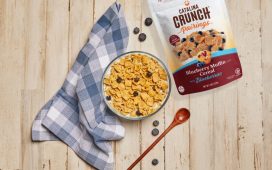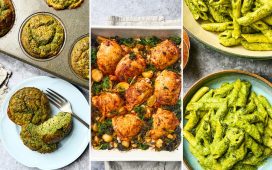What is New Zealand food? This is a question I’ve found myself asking – and being asked – with increasing frequency as I settle into a life away from home. It wasn’t something I ever thought about much when I lived in NZ. We have such a thriving culinary culture and, despite our relative geographic isolation, can dine on almost any cuisine in the world all within the tiny island nation. As legendary chef Peter Gordon told me: “It’s easy to eat your way around the world in NZ.”
It wasn’t until I moved to London and experienced a visceral sense of homesickness that I began to truly reflect on Aotearoa, the Māori name for New Zealand, through a gastronomic lens. I envied other expats – when food is such a strong link to home, others could help quell their pain by visiting one of London’s many international restaurants: Vietnamese on Kingsland Road, Ghanaian around the corner from the Emirates Stadium, Thai from the High Road in Leytonstone. Meanwhile I was left staring at the lamb section of the supermarket, wondering if it’s ethical to purchase a leg imported from New Zealand, and mourning the closure of Peter Gordon’s Providores and Tapa Room.
Thanks to an extended period of almost aggressive modern day westernisation and considered mainstream rejection of Māori culture as a result of European colonisation, many answers to this question would involve Europeanised food: a New Zealand pie, pavlova, Kiwi onion dip (made from Maggi onion soup mix and reduced cream). Foods like fairy bread, lamingtons and cheerio sausages evoke an unmatched level of nostalgia, but children’s birthday party snacks do not equate to a whole meal and cannot substitute for what is a distinct lack of focus on indigenous food in New Zealand.
When I think of Kiwi food I think of kai moana – seafood. I think of my dad coming back to our bach (beach house) in Northland with a bucket full of snapper, or maybe a kingfish. I think about whitebait fritters sandwiched between two pieces of fluffy white bread, a drizzle of lemon adding that final, lip-puckering flourish. I think of the first time I tried kina – a sea urchin – and the way in which the punchy bitterness seemed to linger in my palate for hours. I think about kumara, mixed through a curry or bringing an earthy sweetness to soups slurped up on icy days. Most of all, however, I think about how intrinsically these foods are linked to the land and the people.
I, evidently, am not the only person who has been considering this definition of Aotearoa food over the last few years. Nor, as a Pākehā (white New Zealander), am I the person to tell that story. While I’ve been pining for the dishes of home, chefs in New Zealand have been redefining what it means to cook in Aotearoa. Spearheaded by people like Monique Fiso, Charles Royal and Joe McLeod, indigenous ingredients and cooking methods have been seeing an increased understanding and respect throughout the mainstream food world. It’s almost humorous, considering Māori communities have been cooking like this for centuries, and it’s taken the rest of us this long to catch up. Through a modern lens, however, the country has never seen a more exciting time for food.
For Fiso, ‘manaakatinga’ (hospitality/generosity) is central to what Aotearoa food is
(Hiakai)
“Twenty-one years ago, every person I spoke to about it laughed in my face, I got it left, right and centre, especially from my own,” says Royal. A chef by trade, Royal discovered a passion for food young, learning that the kitchen was the best place to hang out if you wanted to stay warm and access food easily. With the knowledge from his grandmother, Hinetera Callaghan, Royal began to learn how to cook from the land and utilise Māori medicinal herbs that make up a key part of his expertise and cooking today. He now sells a range of indigenous plants for both culinary and medicinal purposes through his company Kinaki, and tells me about how these can be exported around the world. His favourite to use while cooking? Haarore, also known as native bush mushroom, which is classed as a superfood.
Rex Morgan, of both Te Arawa and Ngai Tahu iwi descent, is the former head chef of Boulcott Street Bistro and a consultant with a focus on Maori cuisine. He also played a strong role in popularising the use of endemic ingredients, especially when he began working for the national airline. “Writing menus for Air New Zealand gave me an opportunity to showcase some indigenous ingredients, mainly in the form of herbs that could be turned into rubs like horopito and kawakawa,” Morgan tells me. A 2010 review of Air New Zealand’s inflight menu included mention of ingredients like karengo (New Zealand seaweed) and horopito (bush pepper). Morgan describes New Zealand cuisine as “a good mixture of modern influences from around the world, alongside local innovation and traditional knowledge”.
A Hiakai dessert of warm brown butter and pear cake, cocoa husk opaline, chocolate crumbs, roasted parsnip ice cream drizzled with horopito butterscotch
(Hiakai)
Fast forward to the present day, and you have chefs like Fiso fusing Maori ingredients and cooking methods with traditional fine dining codes at Wellington restaurant Hiakai (which means hungry in Māori). “After many years studying other cuisines, I realised I knew very little about my own,” Fiso tells me. “That sent me on a quest that I am still on today.” For Fiso, manaakatinga (hospitality/generosity) is central to what Aotearoa food is, but she acknowledges that it “can’t be defined in a few sentences”. Although awareness and knowledge of endemic ingredients and indigenous cuisine was growing in 2016, Fiso says that when she returned to New Zealand, “there was a lack of readily available resources and ingredients”. Through her work with building Hiakai and exploring the food of Aotearoa, she has begun to change that.
Vaughan Mabee at Amisfield restaurant in Central Otago is another member of the new generation of chefs who is working to incorporate local ingredients into his menu as much as possible, and recharter what it means to cook New Zealand cuisine. “New Zealand is a young country not overly defined by history. This allows us to reinterpret a great many influences without parameters,” says Mabee. He works wild ingredients into his menu as much as possible, citing black foot pāua (abalone), kōura (crayfish), and game birds such as pheasant, quail and duck as some of his favourite ingredients to work with.
He gets particularly animated about the future of New Zealand food. “I believe it is only a matter of time until New Zealand cuisine gains world recognition through dining experiences that capture the heart, soul and sheer quality of New Zealand’s produce and culinary craft,” Mabee says. “Restaurants that understand that they are charged with a sensitivity and commitment to the environment and who choose the partners in their menu for the quality they offer as well as their commitment to sustainability and ethical farming practices.” Mabee spent many years working overseas, including a stint at Copenhagen’s Noma – a restaurant strongly linked with the revival and redefinition of Nordic food, something which closely parallels this movement in New Zealand cuisine. He notes that his time working with René Redzepi “allowed me to see that everything comes with possibilities and there should never be limitations to my thinking”.
Smoke and dust fly as food is prepared for a traditional Maori feast by hāngi, steaming through heat from underground thermal activity or heated stones in the base of a pit
(Getty)
Michael Meredith, owner and executive chef of Mr Morris, previously of Meredith’s – Auckland’s famed fine dining restaurant – talks about how the melting pot of cultures in New Zealand has inevitably shaped the development of its cuisine. “For me, it’s about the ingredients we work with but as a flavour profile,” says Meredith. “Our country, especially Auckland, is very multicultural and I think our cuisine truly reflects that.” He adds: “We have a melting pot of influences in New Zealand and our cuisine is still not truly defined. It’s very open with the new generations coming through and there’s a new and exciting cuisine culture emerging from the younger and new generation of Kiwis and chefs.”
Meredith talks about how, for him, New Zealand food is anchored in the core elements of each meal. “Our ingredients are world renowned – you just need to look at the produce we export, our lamb, beef, seafood, venison, honey, kiwifruit, dairy.” He cites Peter Gordon as a key player in putting New Zealand cuisine on the map, discussing how his fusion cooking reflects the reality of globalisation in the present day.
The kitchen team at Mr Morris
(Anna Kidman)
Gordon permanently moved back to NZ in 2020 after three decades in London. When I ask him how he would define New Zealand’s food, he echoes Fiso’s sentiment that it is tied to our history, the arrival of the Europeans, hāngi and pies. One thing he says really sticks with me: “Māori had to learn what was edible here from scratch, away from their own homelands and kai (food).” The food of Aotearoa has always been intrinsically linked to the land. The arrival of the Europeans around 250 years ago, however, brought a whole host of new ingredients, from lemons and bumble bees for honey, to chicken and beef. This fusion of cultures is deeply integral to our food culture today – one of New Zealand’s leading exports is the much loved Mānuka honey.
Another London-based chef is the Samoa-born, Kiwi-raised Monica Galetti, who furthers Gordon’s idea. “NZ food for me is happy memories with family and friends,” she says. “It’s also ingredients and flavours that are so special to NZ like green lip mussels, hāngis, oysters and of course the wonderful wines.” She utilises influences from both Samoa and New Zealand throughout her cooking, buying lamb from a Kiwi farmer based in the UK, and serves a dessert called Hokey Pokey, based on the classic New Zealand take on honeycomb.
Peter Gordon at his Homeland cooking school
(Peter Gordon)
While much of Gordon’s career has been in the UK, his connection to New Zealand remains strong. Not only did he continue to operate a range of restaurants in Aotearoa, but two of his UK outposts – The Providores and Tapa Room – served as the unofficial food embassy of NZ. Moving back to New Zealand, he set up Homeland, a cafe, restaurant, cooking school and innovation hub in Wynyard Quarter that is central to this redefinition of what Kiwi food really is. “At Homeland we have dishes such as hāngi pork with corn fritters, creamed pāua on toast, wood-roast kumara (sweet potato) with kawakawa (medicinal herb) pesto,” says Gordon. “Many tell us it’s the most Māori menu they’ve seen for a long time.” Reconnecting to his heritage in adult life has no doubt shaped the way Gordon is approaching food on his return to NZ, and this can be evidenced through both the menu and the cooking classes at Homeland. “Because of Covid, people are really enjoying discovering what we have here in NZ,” says Gordon.
The food of New Zealand is undeniably centered in endemic produce and ingredients. However, there are cooking methods that come into play too. The most common is hāngi – the process of slow cooking food over a number of hours in an underground earth oven using heated rocks. The resulting meat, fish and vegetables take on an intensely smokey flavour, with a distinct earthy note that is deeply specific to hāngi food. Fire-based cooking methods, particularly those rooted in indigenous communities, have seen a rise in popularity in recent years. Southern American BBQ has unsurprisingly taken over the gastronomic world, while restaurants like London’s Brat have carved out a cult culinary following through cooking most of their menu over direct flames. Netflix’s Chef’s Table dedicated an entire season to various BBQ-based cooking methods, taking the viewer from Texas to Australia and on to Mexico. With increased advocacy, popularity and education, hāngi could certainly fall into similar realms. “I looked at doing hāngi in London several years ago for an event,” says Gordon, “but I couldn’t find the hāngi masters to help me make it happen, so the skillset isn’t necessarily there when you need it.”
‘Many tell us it’s the most Māori menu they’ve seen for a long time’
(Peter Gordon)
Chef Rewi Spraggon was inspired to set up his educational business Hāngi Master to help preserve the tradition of cooking hāngi, not just for visitors, but for the people of New Zealand who were slowly losing a connection to the deeply important culinary process. Spraggon now hosts regular hāngi workshops, helping to reeducate both Kiwis and visitors on the building and cooking process, alongside serving up hāngi at events with his food truck and presenting TV shows such as Kai Time on the Road. It’s people like Spraggon who are so important to the food industry of Aotearoa – both to its past, and its future; harnessing and preserving these traditional foods and techniques while redefining what they mean in the modern world.
Ben Bayly, head chef at Auckland’s Ahi, has been mentored by Spraggon in order to incorporate hāngi into their menu at the restaurant. The eatery itself aims to be at the forefront of this redefinition of New Zealand food. “New Zealand was discovered by Europeans in 1840, with Māori arriving 2,000 years ago.” Bayly says: “Food is sort of like an equation right? Humans x time x terroir x climate x ingredients = food culture. All of the most defined food cultures in the world, from Nordic to Spanish or French, sort of follow this equation. New Zealand, for now, is missing the time part.” Bayly talks about comparing New Zealand to Italy, thanks to their similarities in topography, size and latitude. Both countries experience various microclimates, and put great emphasis on the surrounding ocean. “New Zealand is one of the most diverse countries in the world, with 200 cultures represented. Rapid immigration has stirred up our food culture melting pot,” says Bayly. “We need time for the ‘broth’ to clarify. We are writing our own food history as we speak.”
It is at places such as Hiakai, Homeland and Ahi, and with the knowledge of experts like Rewi Spraggon and Charles Royal, that the food of New Zealand is being redefined. I have no doubt that when I’m asked what New Zealand food is in five or 10 years, I’ll have an entirely new answer to give; one that is rooted in the endemic produce prolific throughout New Zealand, and centred around Māori recipes and traditions that are fused with the deeply multicultural society in Aotearoa.
I might say that New Zealand food is lamb, seasoned with salt and horopito and slow cooked, hāngi-style, for hours. Or maybe I’ll say it’s Charles Royal’s favourite dish – kina roe, cooked in the shell for 30 minutes until it resembles a souffle. I’ll definitely still say it’s a whitebait fritter and kingfish caught from the ocean in front of me just an hour earlier. Most importantly, however, the people of New Zealand will know this, too. “I’d love our own people, and visitors when they get to come back, to eat things here that don’t exist anywhere else.” says Gordon. “Then we would truly be able to define what Aotearoa kai really is.”






